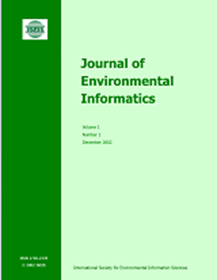沉积物粒度影响以河流为主的三角洲植被模式
IF 5.4
1区 环境科学与生态学
Q1 ENVIRONMENTAL SCIENCES
引用次数: 0
摘要
河流三角洲是世界上人口最稠密的地区之一,具有丰富的生物多样性和高产的生态系统。尽管以往的研究表明,沉积物粒径在决定三角洲形态方面起着关键作用,但其对三角洲植被分布模式的后续影响仍然难以捉摸。为了便于研究,我们使用了一个理论模板,通过数值实验模拟了不同沉积物粒径对三角洲形态演变的影响,并探索了由典型河流为主的三角洲海拔剖面决定的植被分布。结果表明,随着距离的增加,细粒度、粘性三角洲会形成从高海拔向低海拔适应性植被物种过渡的植被形态,而随着距离大粒度、非粘性三角洲中心距离的减少,会出现同样的植被转变趋势。模拟的细粒度、粘性三角洲和大粒度、非粘性三角洲的植被分布模式在自然三角洲中得到了很好的证实。此外,植被分布模式与三角洲粒度驱动的形态过程有关,粘性和非粘性沉积物在构建三角洲上的主导作用对决定由此产生的植被分布模式至关重要。随着三角洲的成熟,每种植被类型的优势地位将逐渐趋于稳定。物种间的竞争会加剧中高地适应性植被的破碎化,从而影响各植被类型的分布格局。沉积物粒径对与三角洲形态过程相关的三角洲植被模式的影响,对保护和恢复三角洲生境具有潜在的意义。本文章由计算机程序翻译,如有差异,请以英文原文为准。
Sediment Grain Size Affects Vegetation Patterns in River-Dominated Deltas
River deltas contain some of the most densely populated areas in the world and are characterized by a rich biodiversity and highly productive ecosystems. Although previous studies have revealed that sediment grain size plays a key role in determining delta morphology, its subsequent effects on deltaic vegetation distribution patterns remain elusive. We used a theoretical templet to facilitate our study by conducting numerical experiments to simulate deltaic morphological evolution in response to various sediment grain sizes and explored the vegetation distribution determined by the elevation profile of a typical river-dominated delta. Our results showed that a fine-grained, cohesive delta would develop vegetation patterns transitioning from high- to low-elevation adapted vegetation species with increasing distance, whereas the same vegetation transformation trend could occur with decreasing distance to the center of a large-grained, noncohesive delta. The modeled vegetation distribution pattern of fine-grained, cohesive and large-grained, noncohesive deltas could be well demonstrated in the natural deltas. In addition, vegetation distribution patterns are related to the grain size-driven morphological processes of deltas, and the leading role of cohesive and noncohesive sediments on constructed delta is critical in determining the resulting vegetation distribution pattern. The dominance of each vegetation type would gradually become stable as delta matures. The interspecies competitions could influence distribution patterns of each vegetation type by enhancing the fragmentation of mid-elevation adapted vegetation. The effects of sediment grain size on the deltaic vegetation patterns associated with a delta’s morphological processes have potential implications for the conservation and restoration of deltaic habitats.
求助全文
通过发布文献求助,成功后即可免费获取论文全文。
去求助
来源期刊

Journal of Environmental Informatics
ENVIRONMENTAL SCIENCES-
CiteScore
12.40
自引率
2.90%
发文量
7
审稿时长
24 months
期刊介绍:
Journal of Environmental Informatics (JEI) is an international, peer-reviewed, and interdisciplinary publication designed to foster research innovation and discovery on basic science and information technology for addressing various environmental problems. The journal aims to motivate and enhance the integration of science and technology to help develop sustainable solutions that are consensus-oriented, risk-informed, scientifically-based and cost-effective. JEI serves researchers, educators and practitioners who are interested in theoretical and/or applied aspects of environmental science, regardless of disciplinary boundaries. The topics addressed by the journal include:
- Planning of energy, environmental and ecological management systems
- Simulation, optimization and Environmental decision support
- Environmental geomatics - GIS, RS and other spatial information technologies
- Informatics for environmental chemistry and biochemistry
- Environmental applications of functional materials
- Environmental phenomena at atomic, molecular and macromolecular scales
- Modeling of chemical, biological and environmental processes
- Modeling of biotechnological systems for enhanced pollution mitigation
- Computer graphics and visualization for environmental decision support
- Artificial intelligence and expert systems for environmental applications
- Environmental statistics and risk analysis
- Climate modeling, downscaling, impact assessment, and adaptation planning
- Other areas of environmental systems science and information technology.
 求助内容:
求助内容: 应助结果提醒方式:
应助结果提醒方式:


